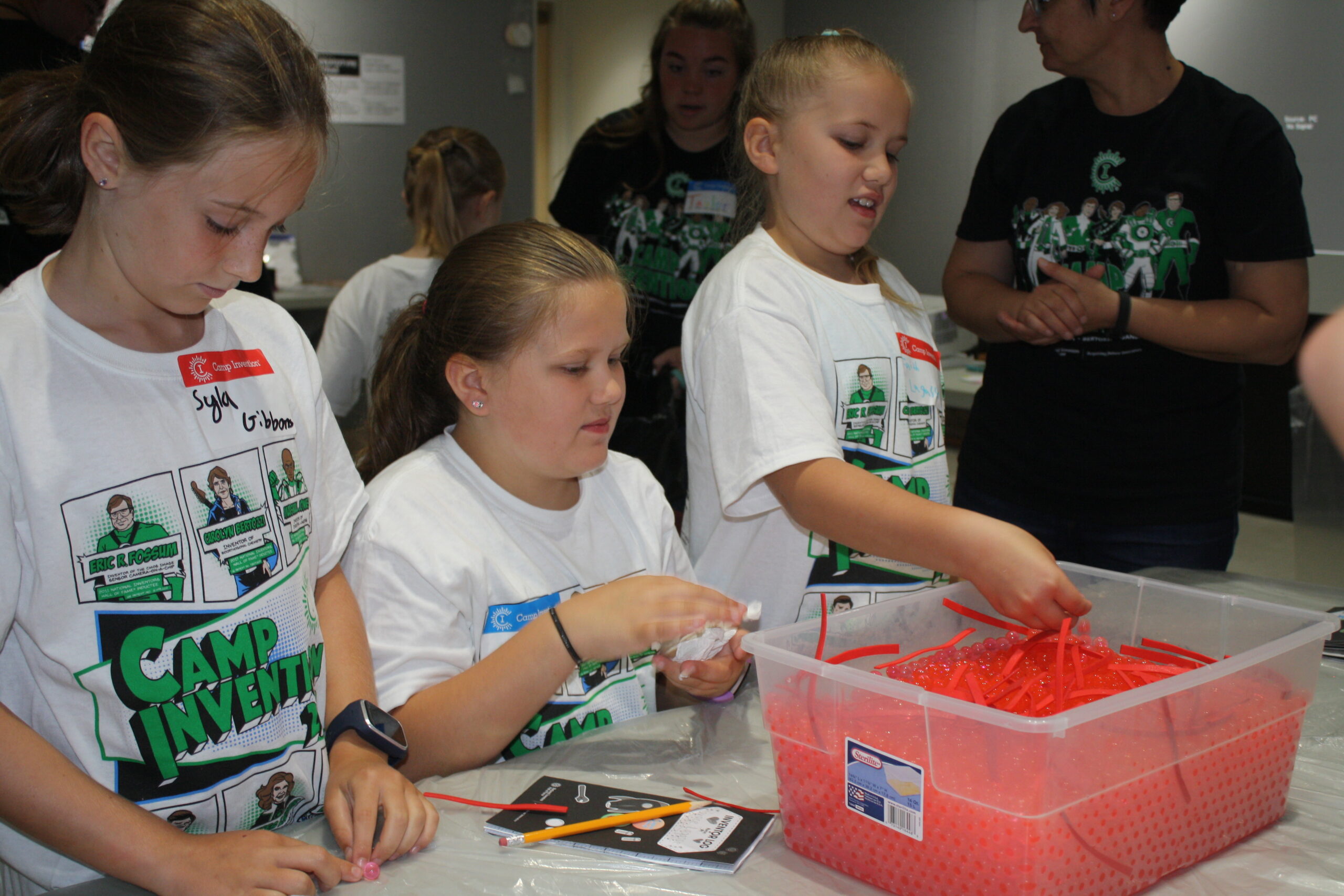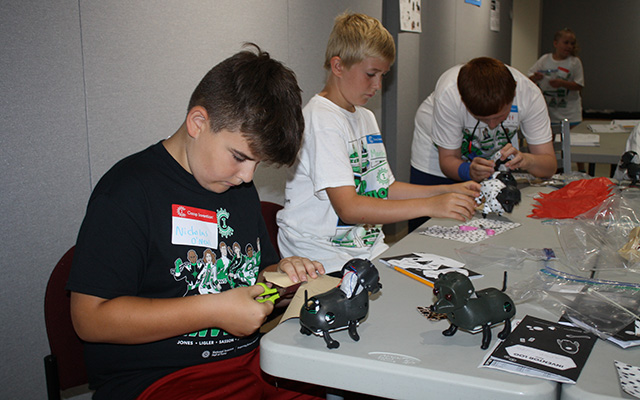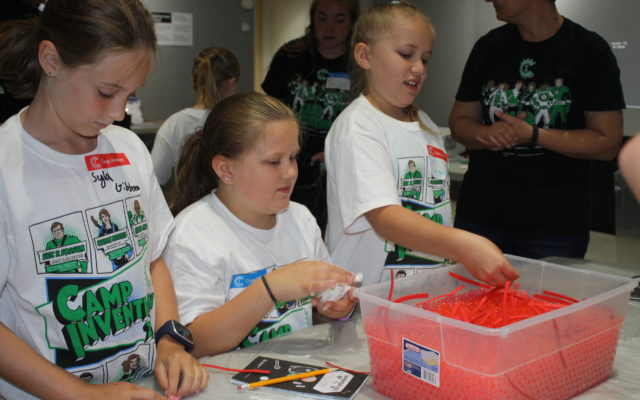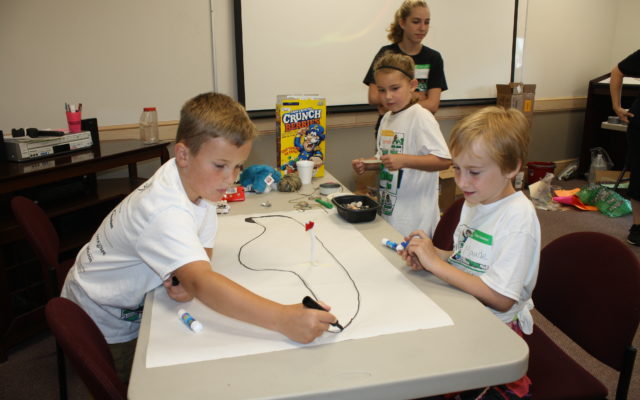
PRESQUE ISLE, Maine — A group of pint-sized inventors were recently given a mission that perhaps no other children in Aroostook County have taken on before: diagnose and treat a viral infection found in each of their robotic dogs.
Thirty-nine students participating in the weeklong Camp Invention at the University of Maine at Presque Isle performed lab tests to find a “cure” for their robotic dog’s illness while also designing unique dog houses and parks to take home for when they “adopted” their new pet.
“This is the best part of the camp,” said Wyatt Beals, 10, of Fort Fairfield, who attended Camp Invention for the first time this year. “We get to design what the our dog will look like and then work on making it better.”
With the help of local educator Halina Herzog and teen leadership interns, students spent much of Wednesday morning getting their hands sticky as they performed a “blood test” on their pet, investigating its red and white blood cells, “popping” the infection, also known as bubble wrap, out of the “blood.”
Now in its fourth year in Presque Isle, Camp Invention is a program of the National Inventors Hall of Fame in partnership with the United States Patent and Trademark Office that encourages children from first to sixth grade to develop ideas both individually and as a team and use problem-solving and imagination to create the next big invention of their lives.
The Robotic Pet Vet exercise was just one of many Science, Engineering, Technology and Mathematics, or STEM, activities during the camp. The students also designed and tested an Optibot — a self-driving robot that operates with sensors on a racetrack; built prototypes of inventions that people can use in everyday life; and designed a futuristic “Smarthome” complete with the latest LED technologies, gadgets and their own innovations. This year all projects revolved around the theme of “Fast Forward,” aimed at helping students think about the impact that inventors have had on the world.
Camp Director Elaine Hendrickson noted that the activities encourage students to not only test out new ideas but also revise their design plan if they find that one method ultimately does not work. During the Optibot session, for instance, some students initially designed the corners on their racetrack too sharp, and after the Optibot went in the wrong direction, the youngsters went back to the drawing board.
“They get to think of ideas and solutions that are out of the box and expand their mindset,” Hendrickson said. “I think the diversity and hands-on approach of the program has been a big draw for many of them.”
Natalie Boulier, 9, of Van Buren has attended Camp Invention for the past four years and said that she might like to pursue a career related to science or invention when she grows up.
“I like Camp Invention because I can let my imagination run wild and create whatever I want,” she said.
With the increasing relevance of everyday technology, Hendrickson believes that Camp Invention can help inspire a new generation of scientists, engineers or inventors.
“It’s important to develop students’ STEM skills because one day they might become scientists and explore the world and make discoveries that can improve the quality of life for everyone,” Hendrickson said.
- Young inventors Nicholas O’Neal, from left, Marshall Hersey and Wyatt Beals design “fur coats” for each of their robot dogs during the weeklong Camp Invention program held at UMPI from July 31 to Aug. 3. (Staff Photo/Melissa Lizotte)
- Faith Lagasse (right) performs a “blood test” to “cure” a robotic pet dog as her sister Grace Lagasse (middle) and fellow Camp Invention student Syla Gibbons look on. (Melissa Lizotte)
- Students Grace Routheier, from left, Elana Barnes and Syla Gibbons test out their robotic dogs during a session of the weeklong Camp Invention on Wednesday, Aug. 1 at the University of Maine at Presque Isle. (Melissa Lizotte)
- Students Tanner Bernard, 7, from left, Maude Drew, 7, and Samantha Argraves, 8, design a racetrack for an Optibot, a sensor-powered, self-driving robot, during Wednesday’s session of Camp Invention at the University of Maine at Presque Isle. (Melissa Lizotte)











